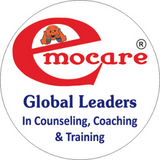Blog
Understanding NLP, VAK, and How to Use Them
- April 17, 2024
- Posted by: SEETHALAKSHMI SIVAKUMAR
- Category: Artificial Intelligence
This post does not exist.
What is NLP?
NLP, or Natural Language Processing, is a branch of artificial intelligence that focuses on the interaction between computers and human language. It involves the analysis and understanding of human language, enabling computers to interpret, process, and respond to natural language inputs.
What is VAK?
VAK stands for Visual, Auditory, and Kinesthetic. It is a model used in learning and communication to categorize the sensory modalities through which individuals perceive and process information. The VAK model suggests that people have different preferences for receiving and conveying information, and these preferences can be classified into visual, auditory, or kinesthetic modes.
How to Use VAK in Sales?
Understanding and utilizing the VAK model in sales can greatly enhance communication and rapport with potential customers. By identifying the dominant sensory modality of a customer, sales professionals can tailor their approach to match the customer’s preferred mode of perception. Here are some tips on how to use VAK in sales:
- Visual: For customers who have a visual preference, use visual aids such as charts, graphs, and product demonstrations. Paint a vivid picture of the benefits and features of your product or service.
- Auditory: For customers who have an auditory preference, focus on delivering your message through spoken words. Engage in active listening and use persuasive language to appeal to their auditory senses.
- Kinesthetic: For customers who have a kinesthetic preference, involve them in hands-on activities or allow them to experience the product or service physically. Use tactile materials or demonstrations to engage their senses.
10 Examples of How VAK Can be Used in Sales
Here are 10 examples of how the VAK model can be applied in sales:
- When presenting a new product, use visual aids such as infographics or product images to appeal to visual learners.
- During a sales pitch, use persuasive and engaging language to capture the attention of auditory learners.
- Allow kinesthetic learners to touch and interact with the product, providing a hands-on experience.
- Use storytelling techniques to create visual imagery and engage the imagination of visual learners.
- Provide auditory learners with audio recordings or testimonials from satisfied customers.
- For kinesthetic learners, offer interactive workshops or demonstrations to allow them to experience the product or service firsthand.
- Use visual cues, such as color-coded charts or diagrams, to highlight the key benefits and features of your offering.
- Engage auditory learners through active discussions and encourage them to ask questions and share their thoughts.
- For kinesthetic learners, incorporate interactive elements into your sales presentations, such as role-playing scenarios or interactive quizzes.
- Utilize visual aids such as virtual tours or 3D models to showcase the physical aspects of a product or service.
How VAK Can be Used by Students to Score More Marks?
The VAK model can also be beneficial for students looking to improve their academic performance. By understanding their preferred learning style, students can tailor their study techniques to match their dominant sensory modality. Here’s how VAK can be used by students to score more marks:
- Visual learners: Use visual aids such as mind maps, diagrams, and color-coded notes to organize and retain information.
- Auditory learners: Record lectures or study materials and listen to them repeatedly. Engage in group discussions or explain concepts out loud to reinforce understanding.
- Kinesthetic learners: Incorporate hands-on activities into your study routine, such as creating models or conducting experiments. Take breaks for physical movement to keep your mind engaged.
By aligning study techniques with their preferred learning style, students can enhance their understanding, retention, and recall of information, ultimately leading to improved academic performance.

Nice article, informative
Article provides a good information on the VAK techniques and on how to apply them to real life situations such as sales and students education
This is a wonderful aspect of understanding children. In teaching, knowing about VAK helps us make lessons more engaging and effective. Understanding VAK isn’t just helpful for teaching—it’s also useful for students to know how they learn best. Visual learners might use color-coded notes, auditory learners could record lectures, and kinesthetic learners might study while moving around. By recognizing and respecting different learning styles, we can make learning more enjoyable and effective for everyone.
From a sales perspective, understanding VAK (Visual, Auditory, and Kinesthetic) preferences can be a game-changer for effectively communicating with potential customers and closing deals. By tailoring your sales approach to match the preferences of visual, auditory, and kinesthetic learners, you can effectively communicate your message and increase your chances of closing sales.